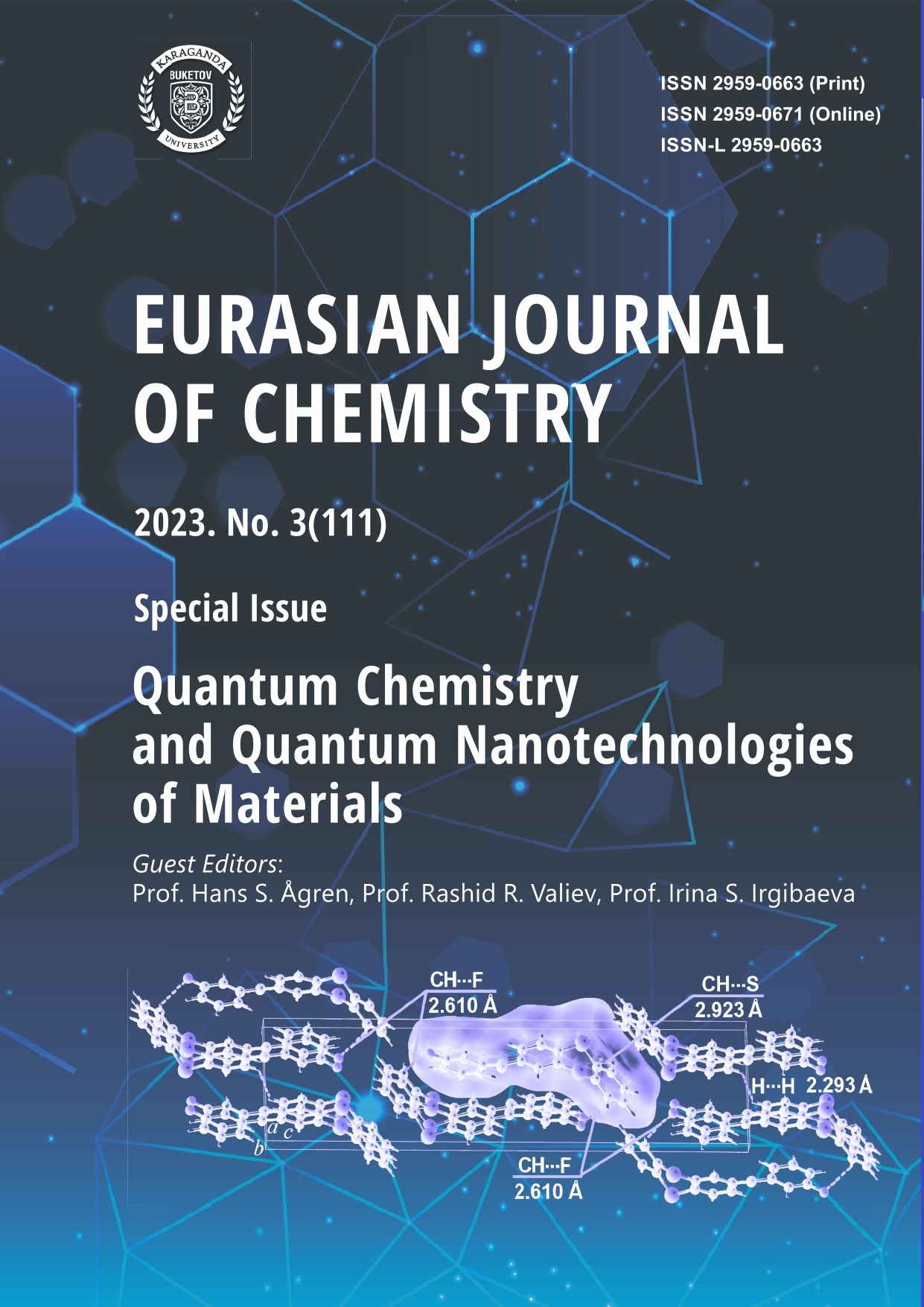Vibronic Emission Spectra of Dithiophene and Terthiophene and Their Complexes with H2S and (H2S)2
DOI:
https://doi.org/10.31489/2959-0663/3-23-8Keywords:
oligothiophenes, hydrogen sulfide, vibronic spectra, emission, complexes, vibration modes, Herzberg-Teller effect, Duschinsky effectAbstract
In this work, the vibronic emission spectra of dithiophene (T2) and terthiophene (T3) molecules and their complexes with hydrogen sulfide and its dimmer were calculated at the TD-DFT / CAM-B3LYP / 6-31G(d) theory level. The solvent was taken into account within the PCM model. Vibronic spectra were calculated considering both the Herzberg-Teller and Duschinsky effects. Good agreement between the computed and experimental spectra was obtained. The vibration promoting modes forming vibronic progressions were found. Vibronic bands for bithiophene and terthiophene were formed by their low-frequency modes (≤370 cm–1), combinations of low-frequency modes with high-frequency modes (1497 and 1672 cm–1 for T2 and 1516 and 1573 cm–1 for T3), and with their composite high-frequency modes. The intensities of vibronic lines for the emission spectra of T2∙∙∙H2S, T3∙∙∙H2S and T2∙∙∙(H2S)2, T3∙∙∙(H2S)2 complexes were shown to decrease 3.7, 2.6 and 5.5, 3.6 times compared to T2 and T3, respectively. The bathochromic shifts of the vibronic bands of dithiophene and terthiophene complexes with H2S and (H2S)2 did not exceed 130 cm–1 for all bands.
Downloads
Additional Files
Published
How to Cite
Issue
Section
License
This work is licensed under a Creative Commons Attribution-NonCommercial-NoDerivatives 4.0 International License.
Authors retain copyright and grant the journal right of first publication with the work simultaneously licensed under a Creative Commons Attribution License (CC BY-NC-ND 4.0) that allows others to share the work with an acknowledgement of the work's authorship and initial publication in this journal.




